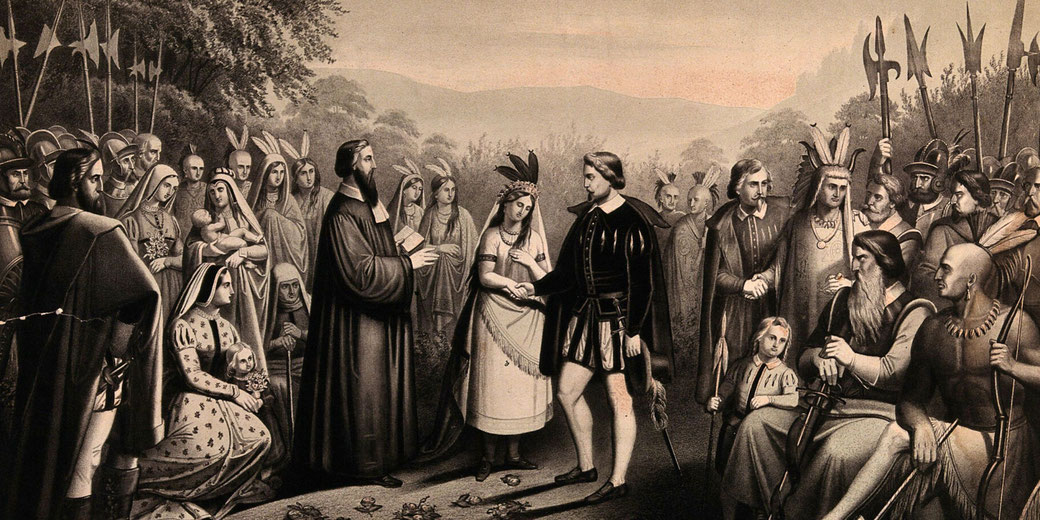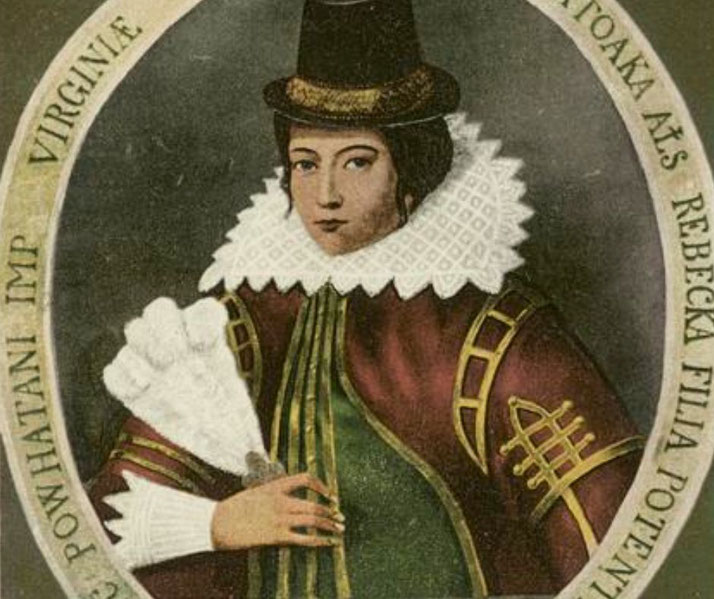Who was the real Pocahontas?

Beyond the animated films and romanticized tales, there lies the true story of Pocahontas, a woman of resilience, intelligence, and unparalleled significance in American history.
Born as Amonute and later known as Matoaka, Pocahontas was not just a playful spirit, but a bridge between two vastly different worlds.
As we delve into the life of this iconic Native American woman, we will uncover the layers of her legacy, from her interactions with the English colonists to her untimely demise in a foreign land.
Her birth and childhood
Pocahontas was born around 1596 in Werowocomoco, the capital of the Powhatan Confederacy, a powerful alliance of about 30 Algonquian-speaking tribes that controlled most of the coastal Virginia region.
She was the daughter of Wahunsenacawh, also known as Chief Powhatan, the paramount chief of the confederacy.
Her birth name was Amonute, but she was also known as Matoaka, which means "Little Snow Feather".
Pocahontas was a nickname given to her by her father, meaning "Playful One" or "Little Mischief".
Encountering outsiders
Pocahontas first encountered the English colonists in 1607, when they established Jamestown, the first permanent English settlement in North America.
She was about 11 years old at the time and was curious about the newcomers. She often visited the fort and brought food and gifts to the colonists, who were struggling to survive in the harsh environment.
She also learned some English words and acted as a translator and mediator between her people and the colonists.

Meeting John Smith
One of the colonists she befriended was John Smith, a soldier and adventurer who was one of the leaders of Jamestown.
Smith later claimed that Pocahontas saved his life when he was captured by Powhatan warriors and brought to Werowocomoco.
According to Smith, he was about to be executed by Powhatan when Pocahontas threw herself over him and pleaded for his life.
Smith's account has been disputed by many historians, who argue that it was either a fabrication or a misunderstanding of a ritual ceremony.
However, Smith's story has become part of the popular legend of Pocahontas and has inspired many books, movies, and artworks.
The kidnap and marriage of Pocahontas
In 1609, Smith left Virginia after being injured by a gunpowder explosion. He never saw Pocahontas again.
In 1610, Pocahontas stopped visiting Jamestown, as relations between the Powhatan and the colonists deteriorated.
In 1613, she was kidnapped by Captain Samuel Argall, who hoped to use her as a bargaining chip to obtain peace and supplies from Powhatan.
Pocahontas was held captive for over a year at Henricus, another English settlement.
During her captivity, she was exposed to Christianity and was baptized under the name Rebecca.
She also met John Rolfe, a tobacco planter who fell in love with her. Rolfe asked for permission from Powhatan and Governor Thomas Dale to marry Pocahontas.
Powhatan agreed, hoping that the marriage would bring peace between his people and the colonists.
Her incredible journey to England
In 1616, Pocahontas and Rolfe traveled to England with their son and several other Powhatan people.
They were part of a promotional campaign to attract more settlers and investors to Virginia.
Pocahontas was presented to English society as an example of a "civilized savage" who had converted to Christianity and embraced English culture.
She was received by King James I and Queen Anne at Whitehall Palace and attended various social events.
She also met John Smith again, who had returned from his travels in Europe. Pocahontas was reportedly shocked and angry to see him alive, as she had been told that he had died.
Her tragic death away from her homeland
In March 1617, Pocahontas and her family prepared to return to Virginia. However, as they boarded their ship at Gravesend, Pocahontas became ill with a fever.
She died shortly after at the age of about 21. The exact cause of her death is unknown, but it may have been due to pneumonia, tuberculosis, or smallpox.
She was buried at St George's Church in Gravesend; her grave's exact location is unknown because the church was rebuilt after being destroyed by a fire.
Why people still talk about Pocahontas today
Pocahontas left behind a remarkable legacy that has influenced American history and culture for centuries.
She is widely regarded as a symbol of cross-cultural exchange, cooperation, and friendship.
She is also a source of pride and inspiration for many Native Americans, especially the Pamunkey and Mattaponi tribes, who claim to be her direct descendants.
Her story has been romanticized and fictionalized in many forms of media, such as the 1995 Disney animated film Pocahontas, which portrays her as a young woman who falls in love with John Smith and prevents a war between the Powhatan and the colonists.
However, many critics have pointed out the historical inaccuracies and stereotypes in these representations, which often ignore or distort the realities of colonialism, racism, and violence that Pocahontas and her people faced.
Pocahontas remains a fascinating and complex figure who deserves to be remembered and honored for her courage, intelligence, and resilience.
She was a bridge between two worlds, a peacemaker, a mother, and a leader.
What do you need help with?
Download ready-to-use digital learning resources
Copyright © History Skills 2014-2025.
Contact via email
With the exception of links to external sites, some historical sources and extracts from specific publications, all content on this website is copyrighted by History Skills. This content may not be copied, republished or redistributed without written permission from the website creator. Please use the Contact page to obtain relevant permission.





